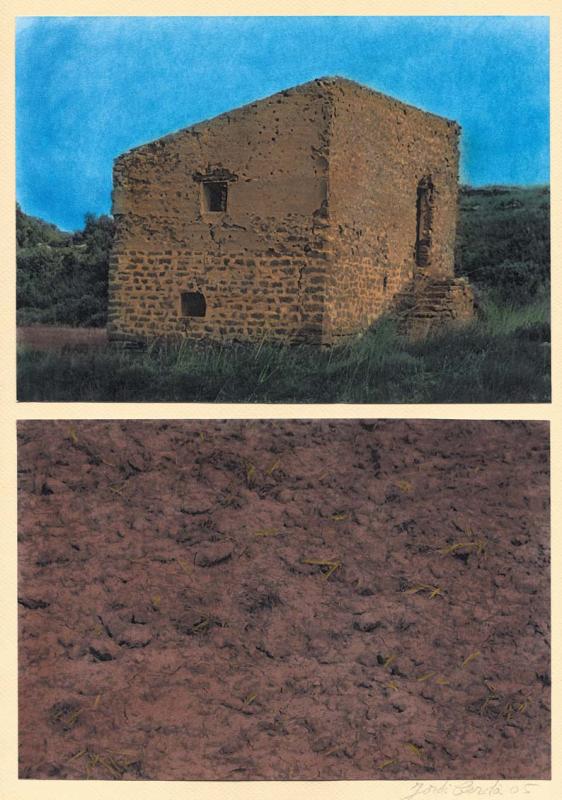Jordi Cerdà
The Forest Siscar. Damn landscape
Jordi Cerdà, after a long methodical work career in which he has always moved between the theoretical reflection of art and the artist and the playful reflection of a poetic and surreal nature, presents us with a work of fifteen pieces today one of its kind in its formative stage, where it presented a first tribute to Guinovart, also present in this Space. The work of Cerdà opens a reflection on the landscape and the constructions of a specific geographic location: the Forest of Siscar d'Agramunt, which is linked to the family history of Josep Guinovart.
In the vital sensitivity of Guinovart, Agramunt is the trigger for the suffering and memories of childhood linked to the civil war. Agramunt, a land punished where he took refuge with his mother when they fled Barcelona, it is their particular Guernika. Cerdà, from this site mistreated by the civil war, presents us with some current photographic images in which he poses the persistence of memory, memory and history confronted with the amnesia of the 21st century.
Landscaping was one of the battlefields of pictorial renewal, especially in the nineteenth century. Romantic, realistic or impressionist, landscaping refers to the bipolarity between man and nature, between culture and life, between art and reality. This same dichotomy from a conceptual post-soul view is what Jordi Cerdà proposes in his work. In his diptychs, triptychs and polyphthalics, of a romantic aesthetic rooted, he works on a re-reading of today's landscapes that are blurred in the memory, divided, manipulated, and that refer us to events lived by the artist who gives his name to the " Espai Guinovart.
Beyond this reading, Jordi Cerdà raises a reflection on the history of this place and on the unconscious that seem to keep the walls, stones and textures of a land as special as that of Agramunt, essence and leading us to total abstraction. Mas Timó, the center of the resistance of the civil war, is presented as a vertical debris surrounded by different construction sites in a reflection on destruction and construction.
With a great plastic beauty, laser-manipulating photographs and coloring them with a gesture that in some cases approaches the purest primitivism, attracts the viewer to reflect on the image and the meaning of a place questioning the visual system codes The conceptual manipulation that Jordi Cerdà makes from an objective element such as apparently neutral and scientific photography, conveys to us some evocations of mysterious beauty and a broad interpretive horizon of magritian roots. In this way, the silenced spur of a silent hermitage, the stone to grind that perhaps one day it crumbled everything, the walls that do not limit with nothing, the stairs that do not carry anywhere ... everything wrapped in a light And a color that creates a magical and mysterious aureole that captivates us back and forth over time, is what makes Jordi Cerdà's work a great contemporary art language work.
Seems like landscapes without history, but each of the fragments represented hides a story that has survived the destructive hand of man, remaining as a witness to human barbarity, overcoming the passage of time, which allows them to get closer to ours past They are portraying images of a story, of a place with all its unconscious burden that makes us look in memory and breaks the real limits of what surrounds us.
Landscapes that make up the spirit of a whole world undergoing change and that we have frozen in concepts and images within us lead us to a reflection: what do we see? What do we think? They even lead us to meet our past and our present as men, as women and as a people.
In this series, Jordi Cerdà, at the time of recreating the landscape of Agramunt, has opened a question about the concept he wants to present to the spectators. It creates a tension between aesthetic beauty and a mental concept, between reality and unconscious, between history and memory, between memory and reality.
Joaquín Ragón Cardoner
Esther Villafranca Mercé


